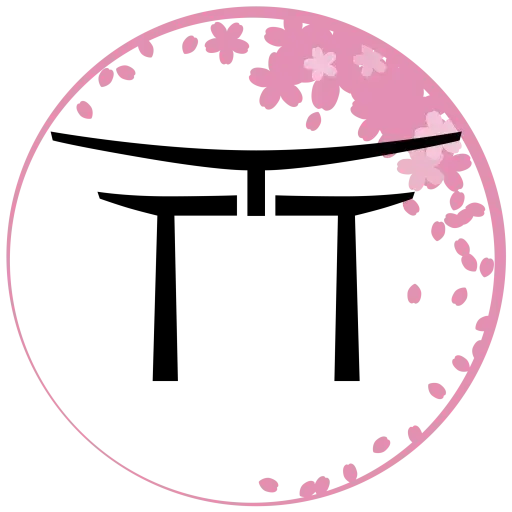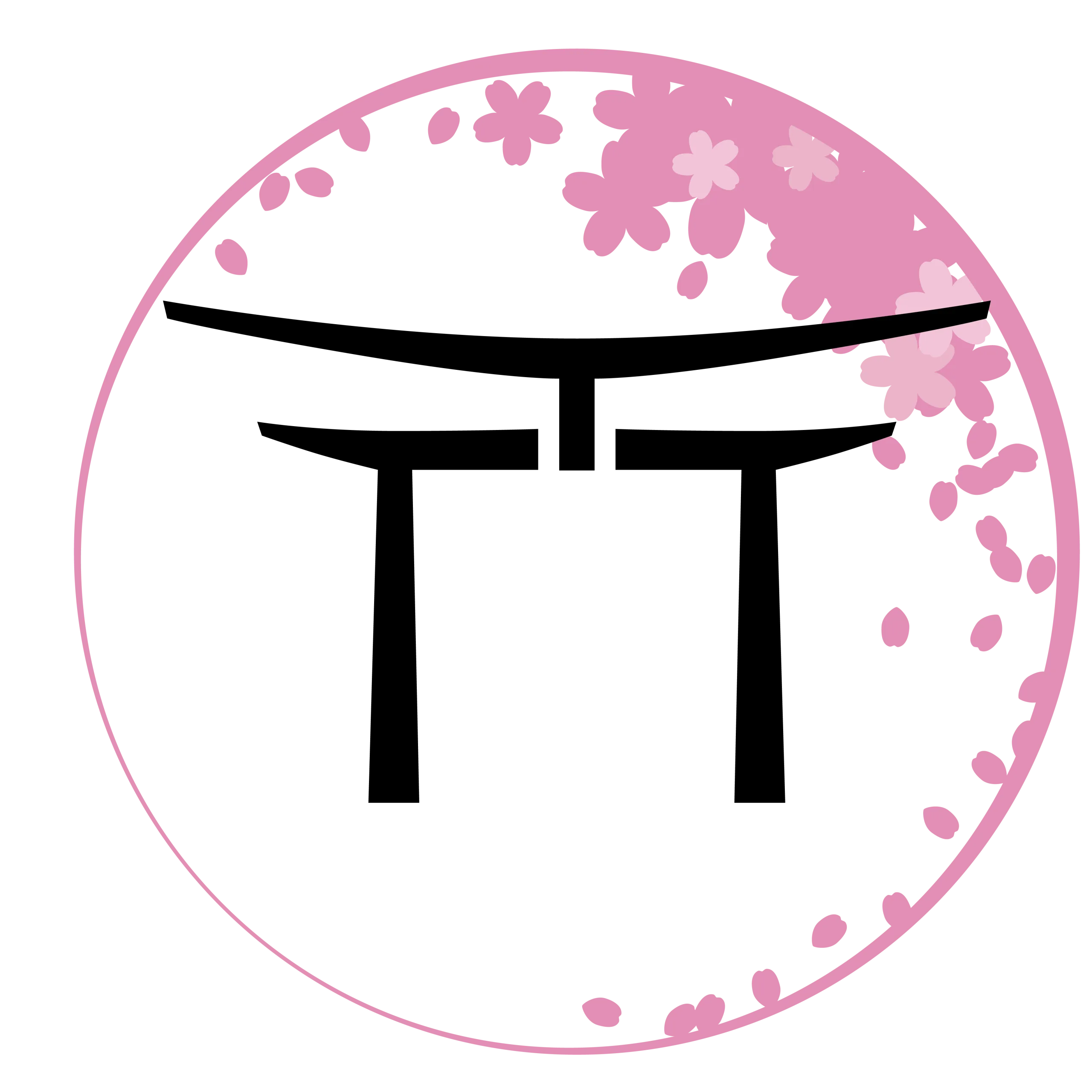Traveling in Japan with a Baby — What to Know
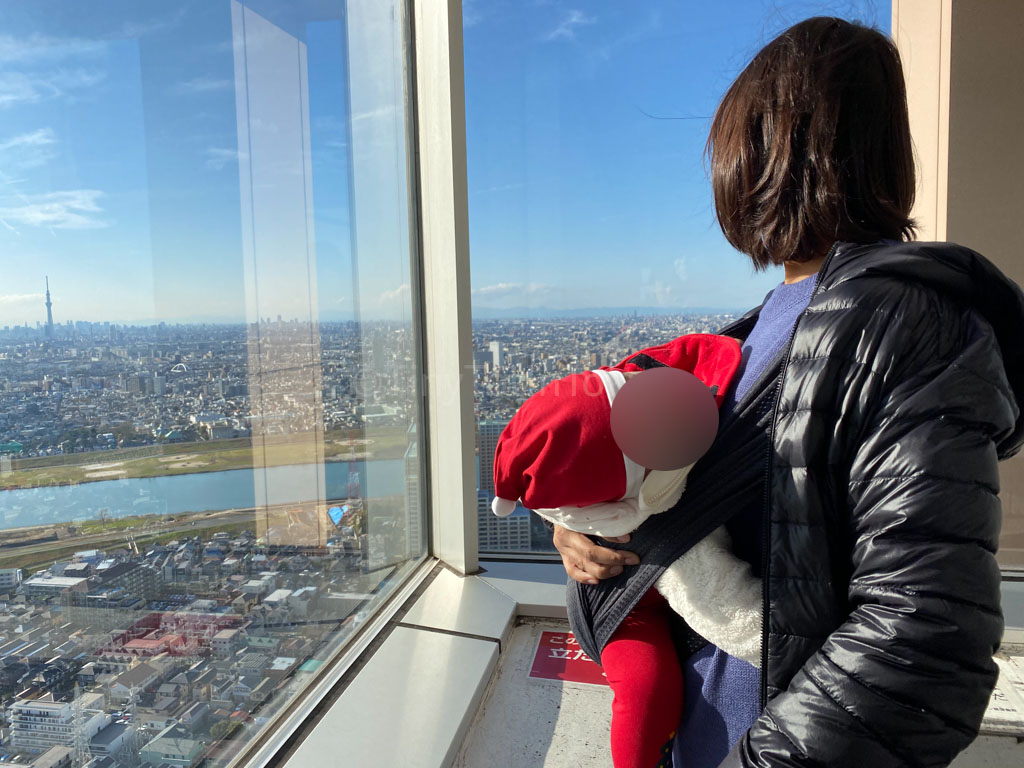
Last Updated on May 15, 2025 by Kay
This post may contain affiliate links, meaning I may earn a small commission on any purchases through those links at zero additional cost to you. Whatever I make goes to keeping this website running and I am forever grateful for the support. See my Privacy Policy for more information.
If you’re thinking about Japan travel with a baby and looking for advice from a local mom on what to expect and be prepared for, you’ve come to the right place.
I’ve raised my daughter in Japan for almost five years so far, ever since she was born, and been writing about my experiences on this blog to help other parents. My husband and I are avid travelers so when it came to traveling with a baby in Japan, we made sure to do our research to ensure the smoothest trip possible whenever we went out or traveled to another city or prefecture.
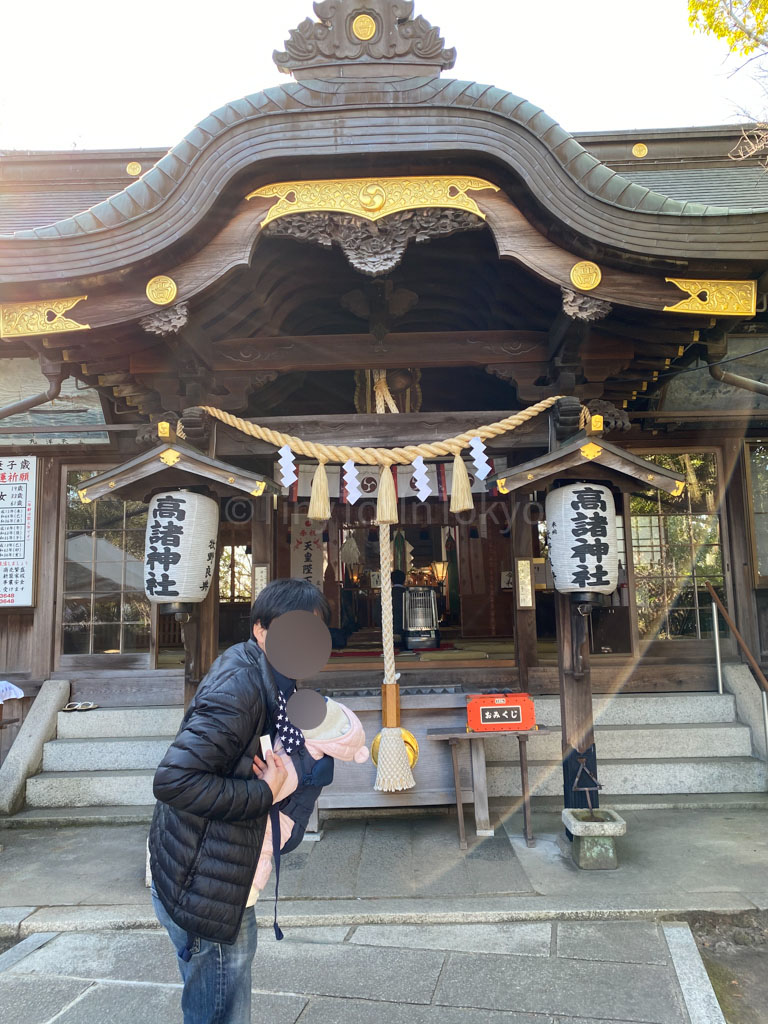
If you’re wondering whether you should bring your baby to Japan (or travel domestically with them if you live here), it certainly can be done. After all, Japanese people have babies, too! Your baby might not remember it, but seeing your child react to different things for the first time is so precious and you’ll have experiences you wouldn’t have had elsewhere, not to mention amazing photos.
People in Japan are really kind to children and my daughter always got (and still gets) so many sweet comments and compliments. Once an old man gifted her with a rubber band — I guess he wanted to give her something and that was all he had on hand!
Japan is known for being a convenient as well as safe and clean country, which is why it’s a popular tourist destination (and somewhere I’ve decided to live permanently). After having my daughter, I was amazed at how baby-friendly it is, too! However, there are still things to be prepared for when traveling with your baby in Japan.
However, if I’m going to be completely honest, I find Japan is better experienced with a toddler. If you’re traveling from far away, I also encourage you to try going to a closer destination first with your child to see how they do.
Again, I will never discourage someone from visiting Japan with their baby. So in this article, I’ll share what I think, as someone who raised their child here from birth, that every parent should know to help them make their trip to Japan with their baby stress-free and enjoyable.
Table of Contents
- Know Where to Buy Diapers, Wipes, Formula, and Baby Food
- Bring Medication If Possible
- Make Use of Baby Rooms to Change Diapers and Breastfeed
- Download the Mamapapamap app
- Download Google Translate and Google Lens
- Consider the Pros and Cons of Bringing a Stroller to Japan
- Avoid Rush Hour and Make Use of Priority Seating
- Know That Not All Restaurants are Baby-Friendly
- Keep in Mind That Hotels Might Not Have Cribs
- Dress for the Weather
- Look for Baby-Friendly Activities
- Wrap-up: Travel in Japan with a Baby
Know Where to Buy Diapers, Wipes, Formula, and Baby Food
One good thing about Japan is that it is incredibly easy to find stores that sell baby supplies such as diapers, wipes, formula, and baby food.
Here’s where:
- Drugstores (big chains include Matsumoto Kiyoshi, Welcia, and Cocokarafine — don’t expect to find anything in train station drugstores)
- Children stores
- Supermarkets (ones in the center of the city in Tokyo and Osaka are less likely to carry baby supplies)
- Convenience stores (only diapers and at select stores)
I’ve written an article on buying baby diapers in Japan, so please give it a read!
I also have articles on baby food, baby wipes, and formula.
Now, you may be wondering whether you should bring any of this stuff with you when you first come to Japan? I say yes, especially when it comes to baby food and formula.
With diapers, you should have enough to last maybe two days in case you can’t make it to a store to buy diapers for some reason.
However, your child may not like the baby food or formula here. It’s a bit of a risk but you know your child the best, so I know you’ll make the right decision for them!
You can always buy ingredients such as veggies or fruits at grocery stores or convenience stores in Japan and prepare a meal for your child in your hotel room, if needed. (All the more reason to stay somewhere with kitchen facilities.)
Bring Medication If Possible
I recommend bringing medication from home if possible for fevers, such as Infants’ Advil, because I find it’s stronger than the medication here. Also, please only bring medication your child has tried before in case they have an adverse reaction.
There is an over-the-counter medication at drugstores for children ages 3 months and up called Bufferin (バファリン). I am not the biggest fan of Bufferin and found it didn’t work whatsoever with my daughter, but here’s what to look out for if you want to try it.
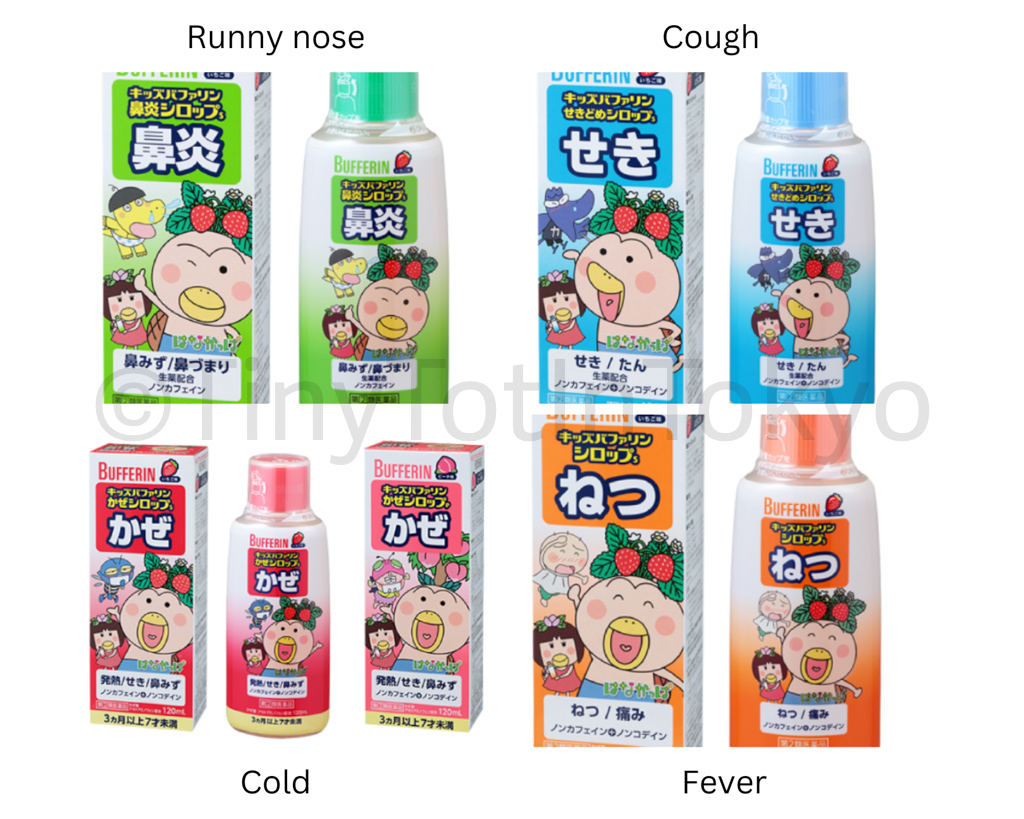
A pharmacist may also ask you if you know how to use it, and if you can’t speak Japanese, there is a possibility they may not allow you to purchase this medication. (And I don’t blame them because it’s scary to give a child medication if you can’t understand the instructions and are solely relying on a translation app, which can be hit or miss.)
If you need to take your child to the doctor, please visit this website to find English-speaking clinics in Japan. You can also ask hotel or ryokan staff to assist you.
Make Use of Baby Rooms to Change Diapers and Breastfeed
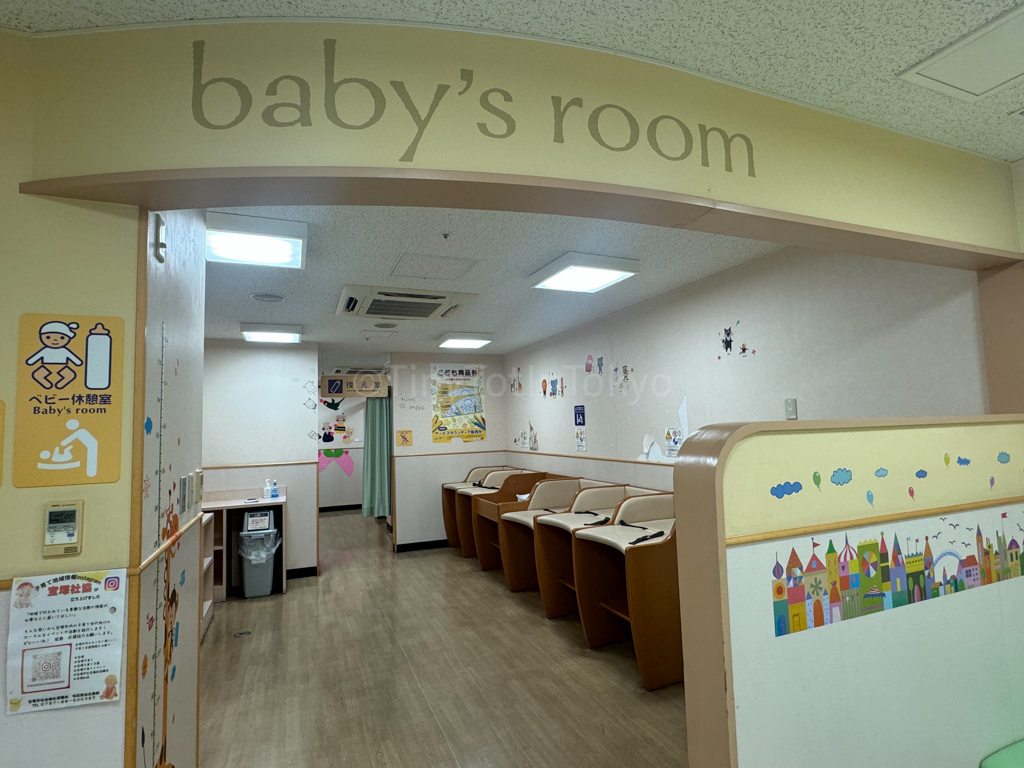
Many shopping malls and department stores have baby rooms where you can change your child’s diaper, nurse, and pump. Some of them also have hot water stations that you can use to prepare powdered formula or baby food. To know more about these rooms, read this article.
There are also nursing booths that can be found at some major train stations and shopping malls. Many washrooms will have changing tables as well, although usually only in the women’s washroom.
Also, please keep in mind that in Japan, breastfeeding is usually done in private (hence why they provide so many places where you can do so!). Please try not to breastfeed or pump in public unless you have a breastfeeding cover, and still try to be discreet about it. For instance, I wouldn’t recommend breastfeeding with a cover on a train.
Now when it comes to changing diapers in public, I have definitely seen some parents doing this. I don’t, however, and I think it’s best not to, but I guess if you’re in a pinch, you might not have a choice. That being said, bring a portable diaper changing mat.
Download the Mamapapamap app
The Mamapapamap app is essential for parents in Japan when they’re out and about with their baby.

It’s easy to use and provides helpful information on where you can find places near you to change diapers, breastfeed, use a microwave, get hot water, and even rent strollers.
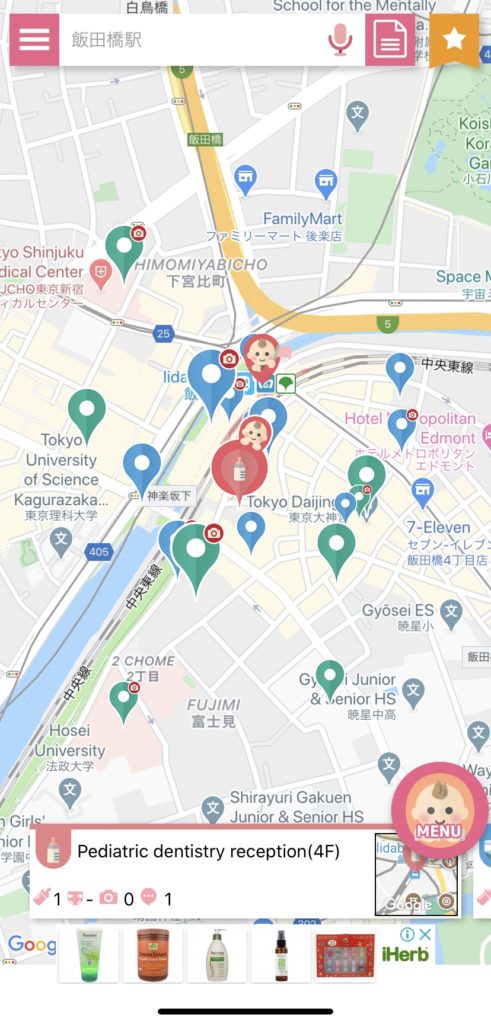
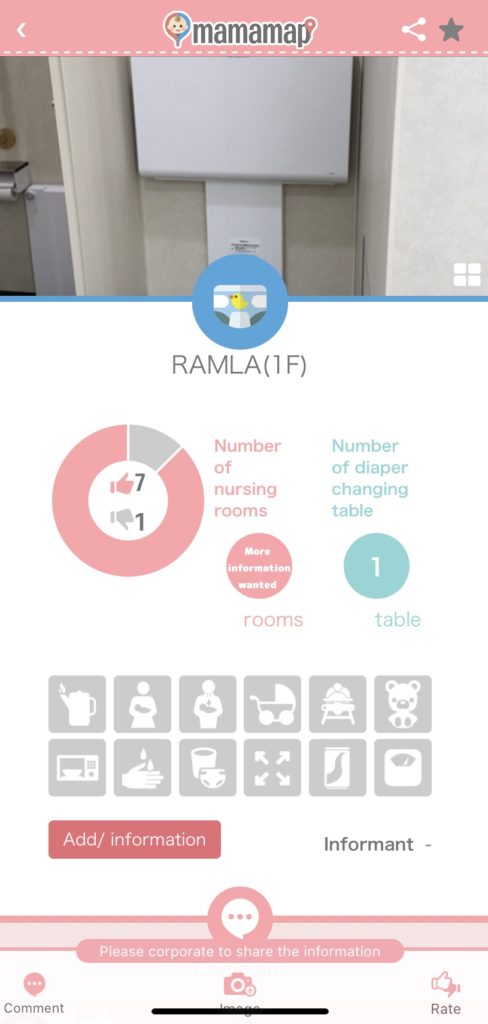
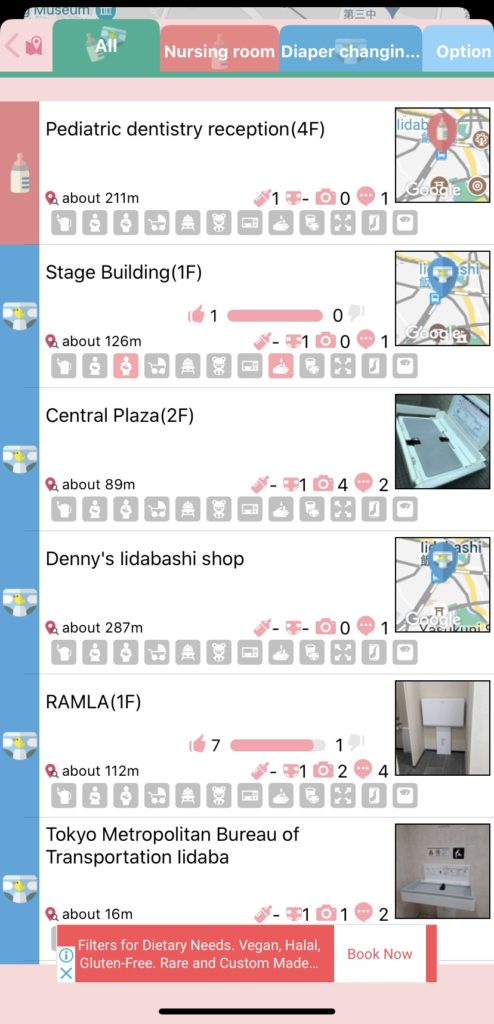
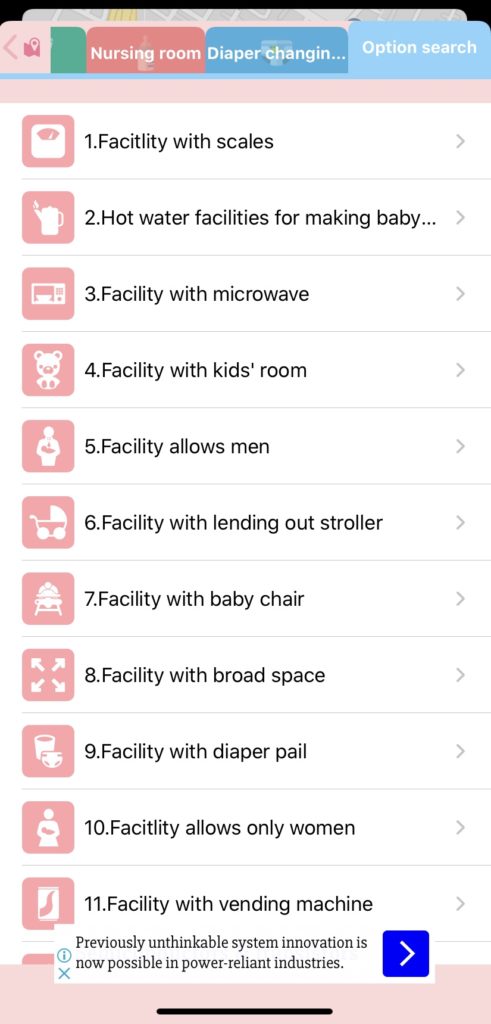
Download Google Translate and Google Lens
If you’re not confident with the Japanese language, you’ll definitely want access to Google Translate and Google Lens to help you read labels for baby products.
Consider the Pros and Cons of Bringing a Stroller to Japan
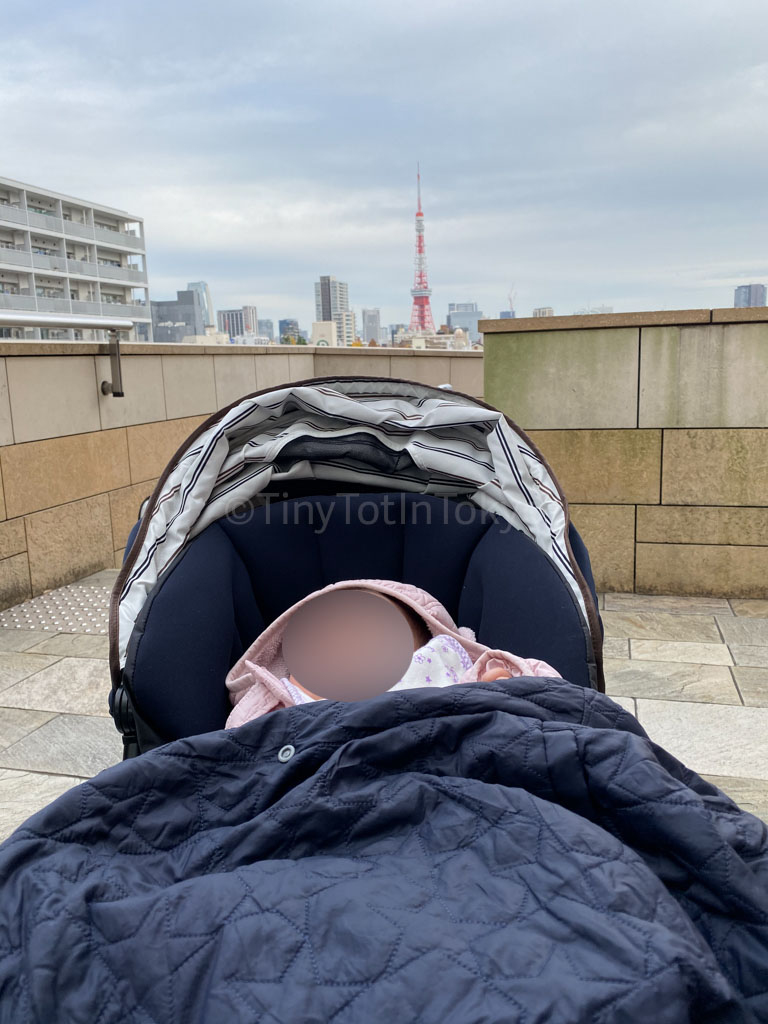
If you’re wondering about whether you should bring a stroller to Japan, you’ll want to read my article all about the topic. Here I go into detail about my experience using a stroller in Tokyo, Kyoto, and Osaka, and talk about pros and cons.
Avoid Rush Hour and Make Use of Priority Seating
Rush hour in major cities like Tokyo and Osaka is intense. I speak from my many years as a former salarywoman and being forced to take the train around the same time as everyone else in the commuting world. People are crushed and some stations even have attendants who push people on the train so they can cram in as many people as possible.
So needless to say, you should try to avoid traveling during rush hour with your little one. This is around 7:30-9 AM and 5-7 PM.
If you have no choice but to take the train during this time or if the train happens to be very crowded, try to look for the priority seating sign, which is 優先席 (yuusenseki).
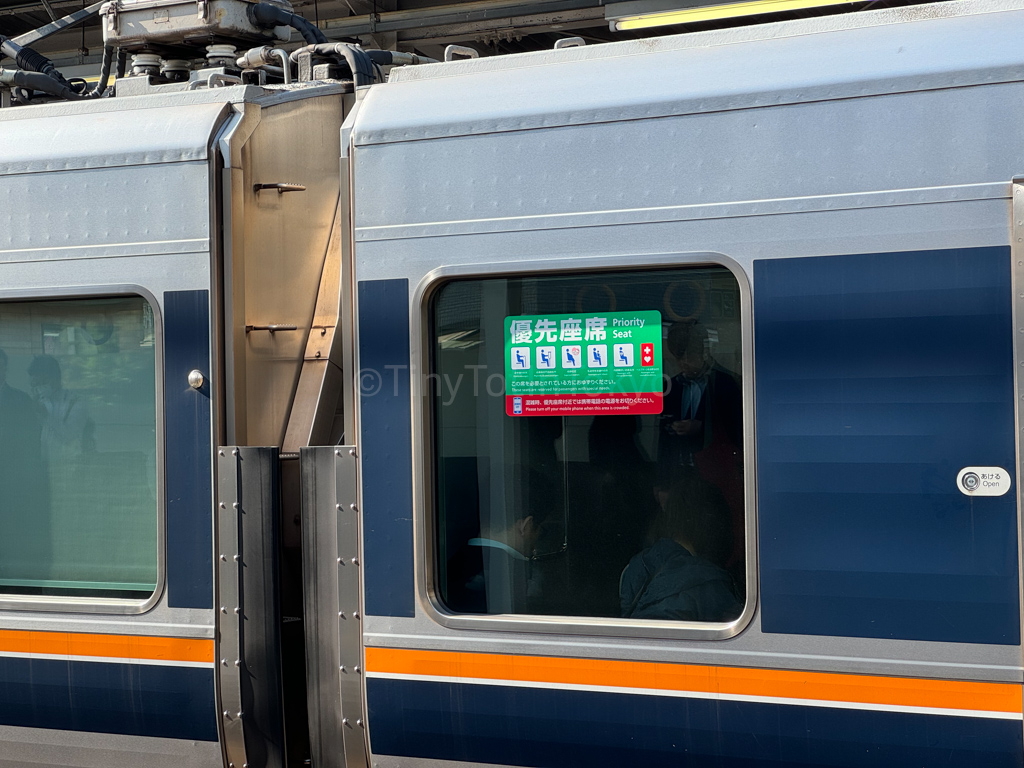
These seats are meant for people such as parents with small children, pregnant women, seniors, and those with physical handicaps. It’s not guaranteed you’ll be able to get a seat here, though.
There are also some carriages that have a specific space for strollers and wheelchairs, as you can see in the image below.
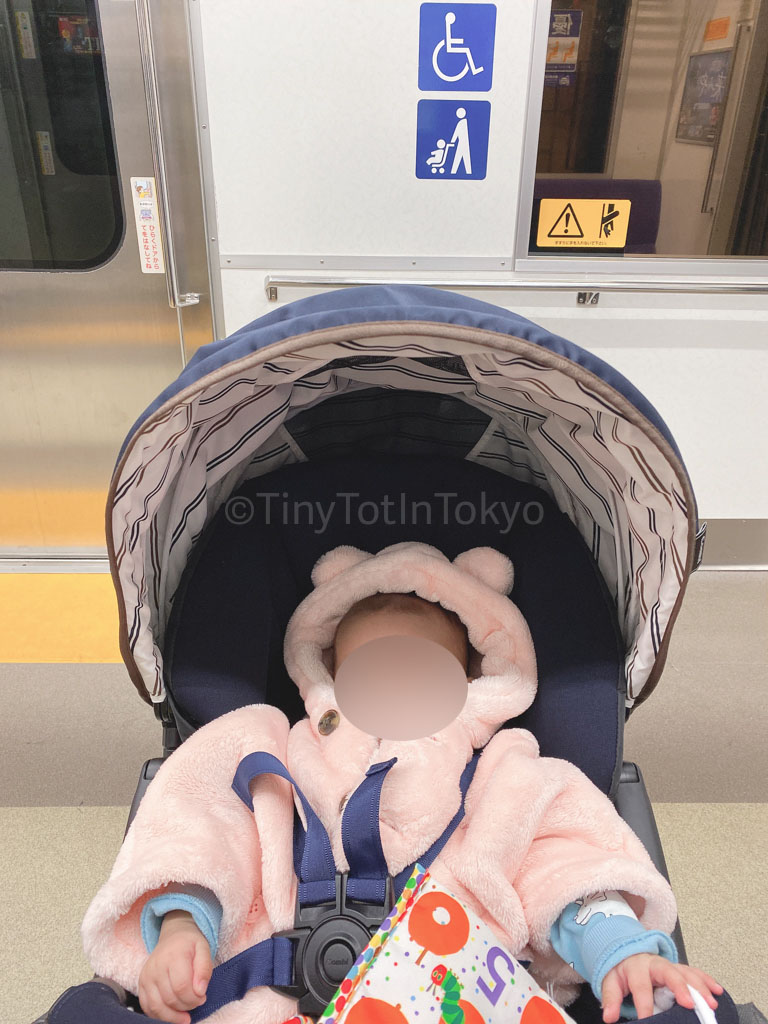
(PS. The other day, I saw some parents fumbling with change when buying subway train tickets at Osaka Station. I highly recommend getting an IC Card, a prepaid card, which you can use on most train lines in Japan that don’t have reserved seating. This will help immensely, especially when going in and out of gates with a stroller, and you can also use it to pay for purchases at convenience stores.
If you’re flying into Narita Airport, you can get an IC Card from the SKYLINER & KEISEI INFORMATION CENTER, which is located after the baggage claim.)
If you’re taking the bullet train (Shinkansen), make sure you reserve your seat in advance! I’ve written an article about my experience taking my daughter on the Shinkansen when she was a baby, which includes the best seats to reserve.
Know That Not All Restaurants are Baby-Friendly
Many restaurants are accommodating when it comes to small children, but whether they’re baby-friendly is another story. For instance, they might not have high chairs or utensils for small kids, or changing tables in the washroom. I have included phrases for asking for these things in my article on eating at restaurants with kids in Japan.
When my daughter was a baby, I always liked going to soba or udon restaurants with Japanese-style seating (tatami) so she could lie down on the zabuton. We also went to lots of family restaurants.
One good way to find child-friendly restaurants is to use the Tabelog. (There’s an app as well but I think it’s only in Japanese?) This website allows you to filter restaurants according to your needs, so you can select “kid-friendly”!
If you want my recommendation for a baby-friendly cafe experience, definitely check out latte chanomama in Shinjuku.
Provided that not all restaurants will have booster seats or utensils, you might want to consider bringing your own. For instance, a lightweight travel booster seat.
Keep in Mind That Hotels Might Not Have Cribs
Co-sleeping is pretty common in Japan and perhaps because of that, some hotels in Japan do not have cribs.
This is why you need to check whether a hotel offers cribs before you book it. Booking.com has a great function where you can select only hotels with cribs, so I suggest using this. I’ve also written about where to stay with kids in various cities in Japan, so take a look!
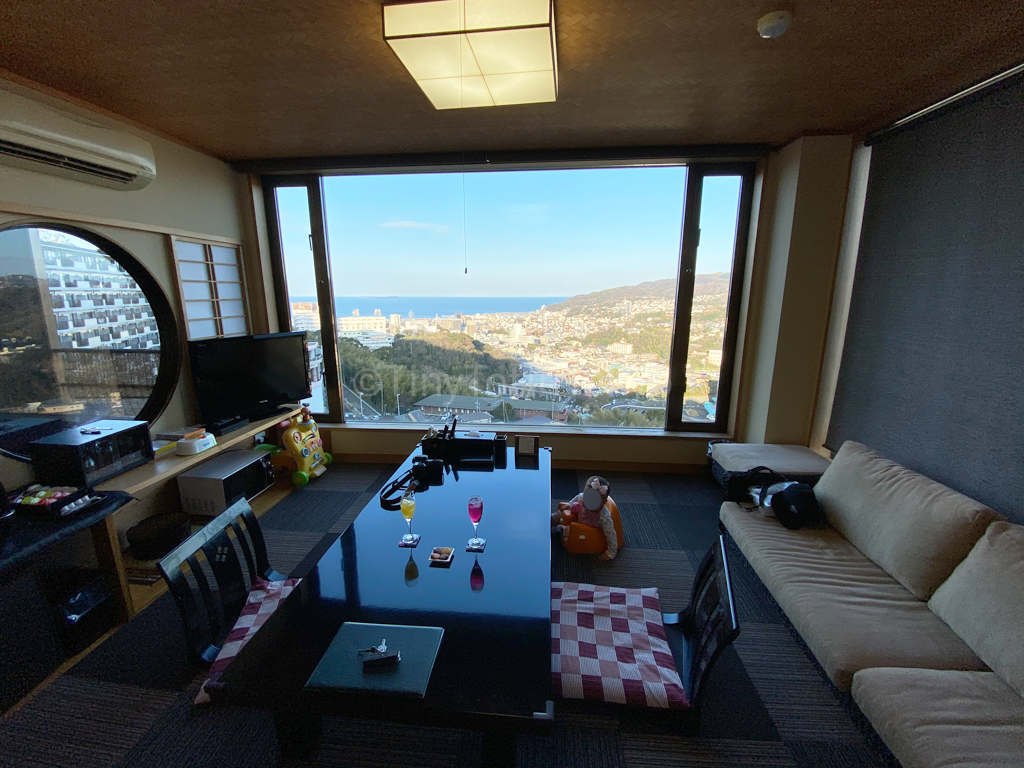
Ryokan are less likely to have cribs than hotels and will instead offer a baby futon. I took my daughter to a ryokan when she was around half a year old and she slept on one of these with no problems (although I was a little scared since it was her first time).
Some hotels and ryokan also offer baby products like soap or Bumbo chairs and sometimes even diapers in wipes, which I share in my kid-friendly hotel and ryokan articles.
Dress for the Weather
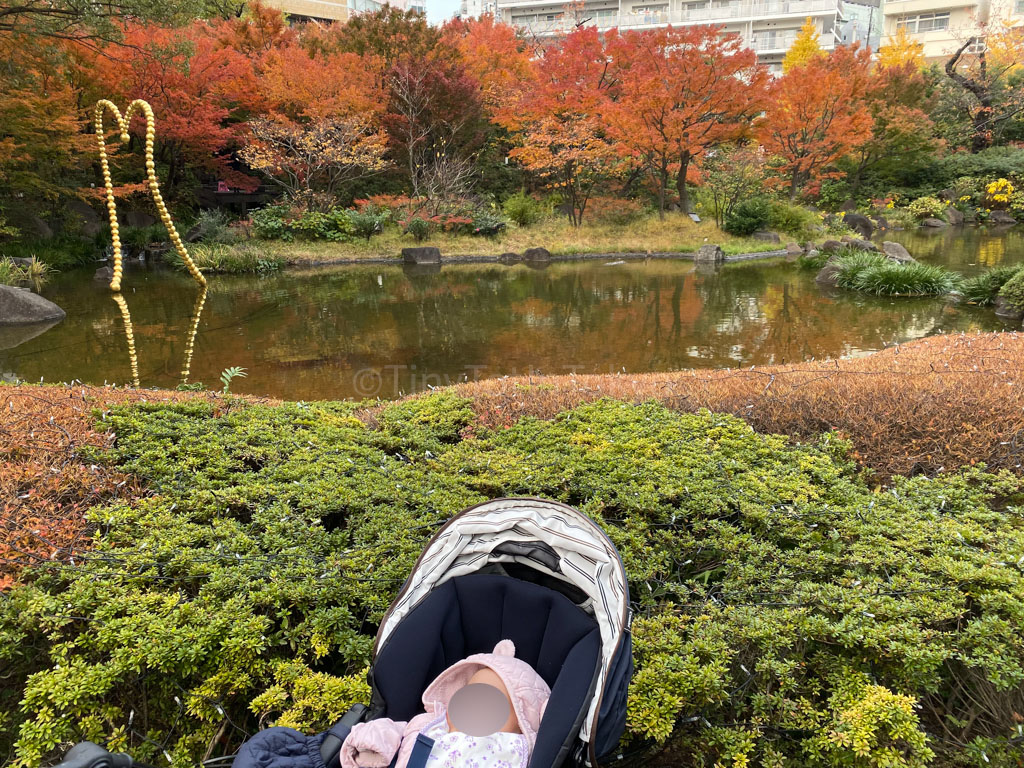
You want to be prepared when it comes to knowing what to pack and how to dress your child. I’ve written an article exactly about this so make sure to check it out.
Look for Baby-Friendly Activities
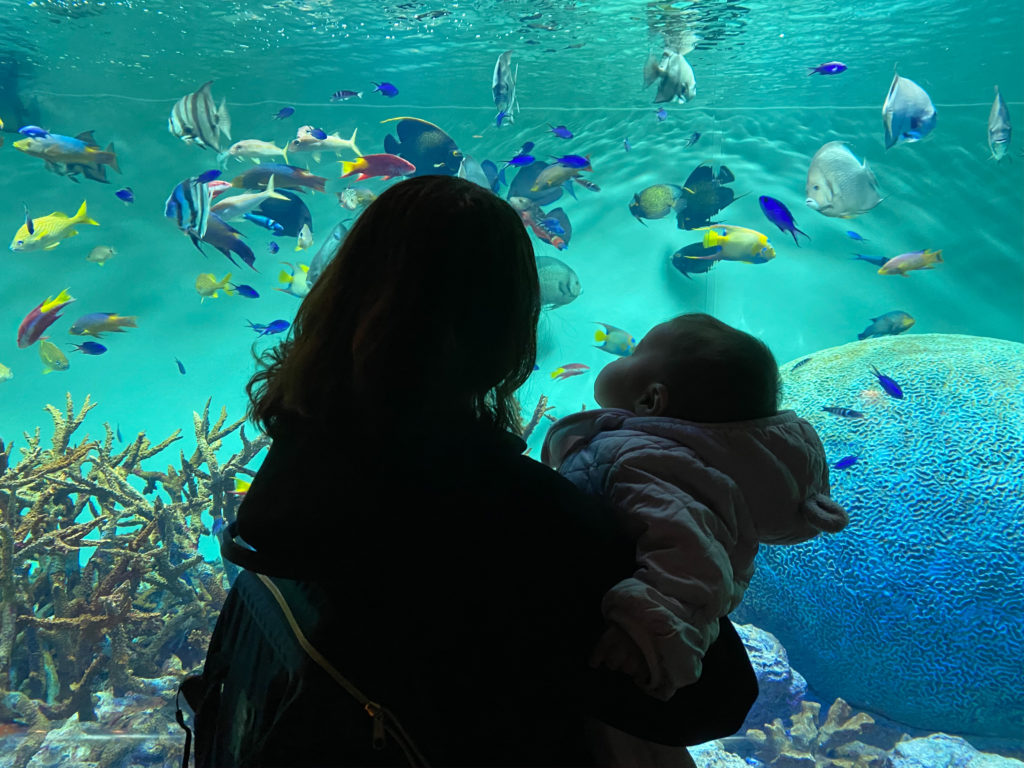
There are a lot of fun places to take your baby in Japan. I was pleasantly surprised when I had my daughter and saw all of the places she could explore and play!
Read the following articles to find out where you should take your little ones:
- Things to do in Tokyo with kids
- Things to do in Kyoto with kids
- Things to do in Osaka with kids
- Things to do in Kobe with kids
Kids ages three and under have free entry to attractions like Tokyo Disneyland, Tokyo DisneySea, and Universal Studios Japan, so make sure to take advantage of that as well!
Wrap-up: Travel in Japan with a Baby
I hope this look at what to know when traveling in Japan with a baby has been helpful. Japan is a country where they try to make everything convenient, and this is no exception for parents.
If you’re wondering what to pack in your diaper bag, take a look at mine for when my daughter was a baby and when she was a toddler.
